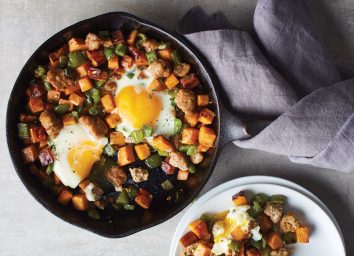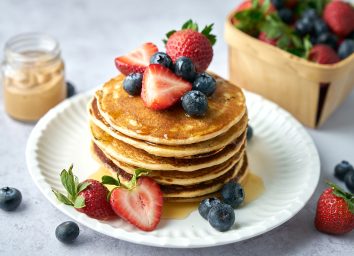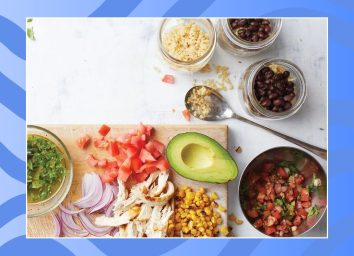21 ‘Healthy’ Snacks You Should Avoid at All Costs, Says Science
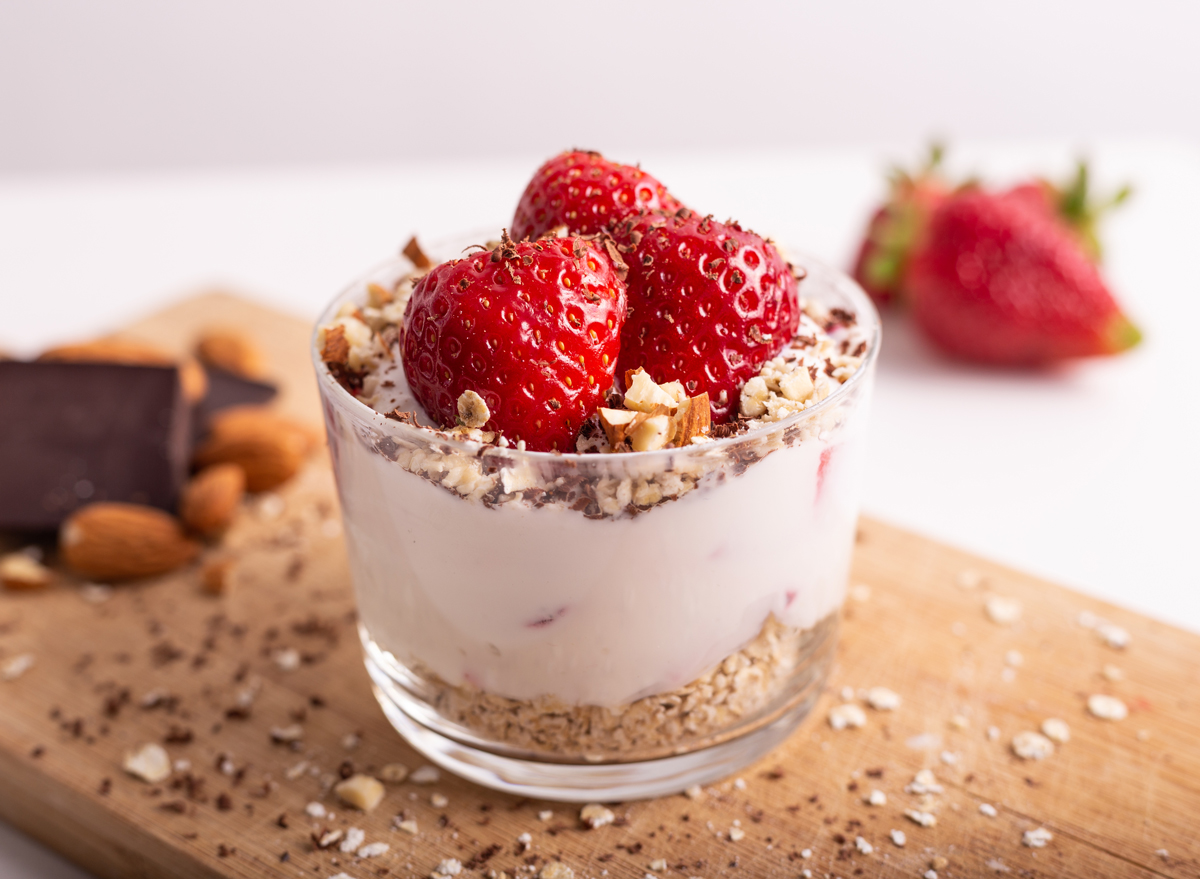
You’ve heard of villains disguised as heroes, and leggings disguised as pants. But junk food disguised as healthy snacks? Sigh. It’s more common than you think.
Between sugar-free, gluten-free, low-carb, low-fat, organic, all-natural, and more, there’s an overwhelming amount of terms that get slapped onto food labels. The confusion around reading these labels makes it easy to mistake something for “healthy,” explains registered dietician Bonnie Taub-Dix, RDN, creator of BetterThanDieting and author of Read It Before You Eat It. Oftentimes, the healthy snacks you’re reaching for at the supermarket are actually loaded with sugar, preservatives, and other *thumbs down* ingredients, she says.
Snacking for weight loss is something we highly encourage, so it’s extra important you make the right choices with your healthy snacks. Noshing on deceptively unhealthy snacks could be causing your weight loss plateau, or even pushing you into weight gain territory.
Refer to this list of the terrible “healthy” snacks for weight loss, so you can spot and avoid the worst offenders. Plus, you’ll find some helpful portion control tips to help you stay on track. And these Eating Habits to Lose Abdominal Fat As You Age can help you out on your journey, too.
Rice cakes
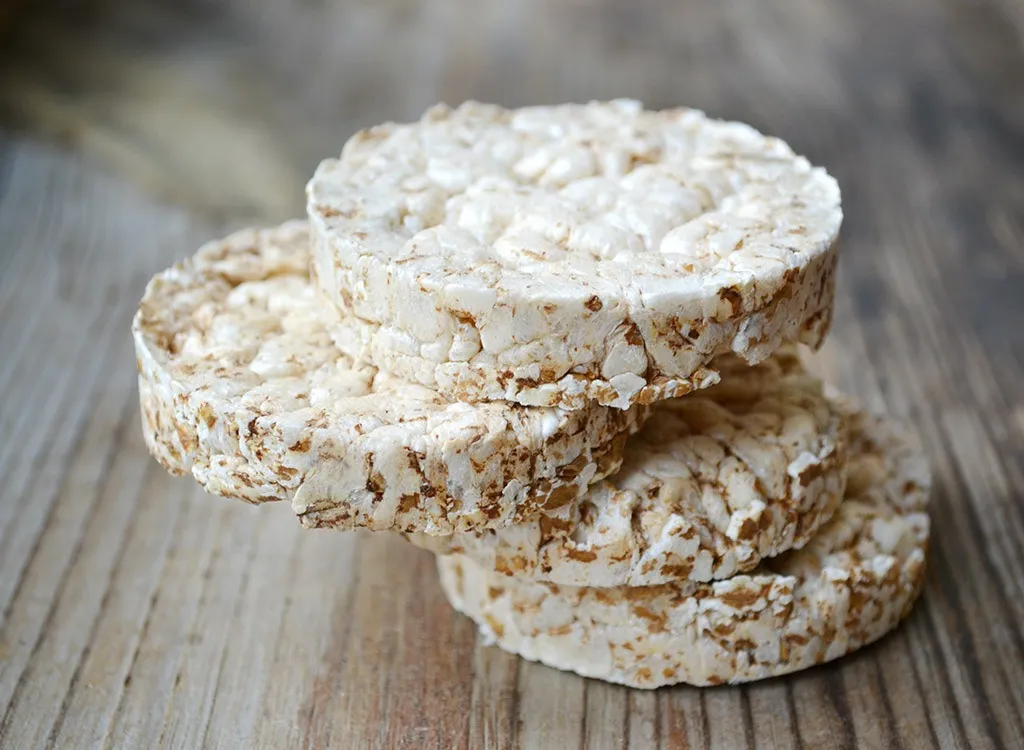
Rice cakes are an old-school weight loss staple. But the simple carbohydrates rank notoriously high on the glycemic index (GI)—a measure of how quickly blood rises in response to food on a scale of one to 100 (rice cakes come in at 82). High GI foods provide a rush of energy, but can leave you hungry within a few hours. Researchers at the New Balance Foundation Obesity Prevention Center found high-GI snacks caused excessive hunger and increased activity in craving and reward area of the brain—the perfect storm for overeating and weight gain.
Adding healthy fats or protein to a meal lowers its glycemic load. Swap a two-cake mini meal for one rice cake topped with a generous swipe of nut butter. The combo will keep you fuller for longer, and has the added benefit of being a complete protein with all nine essential amino acids.
Dark chocolate chips
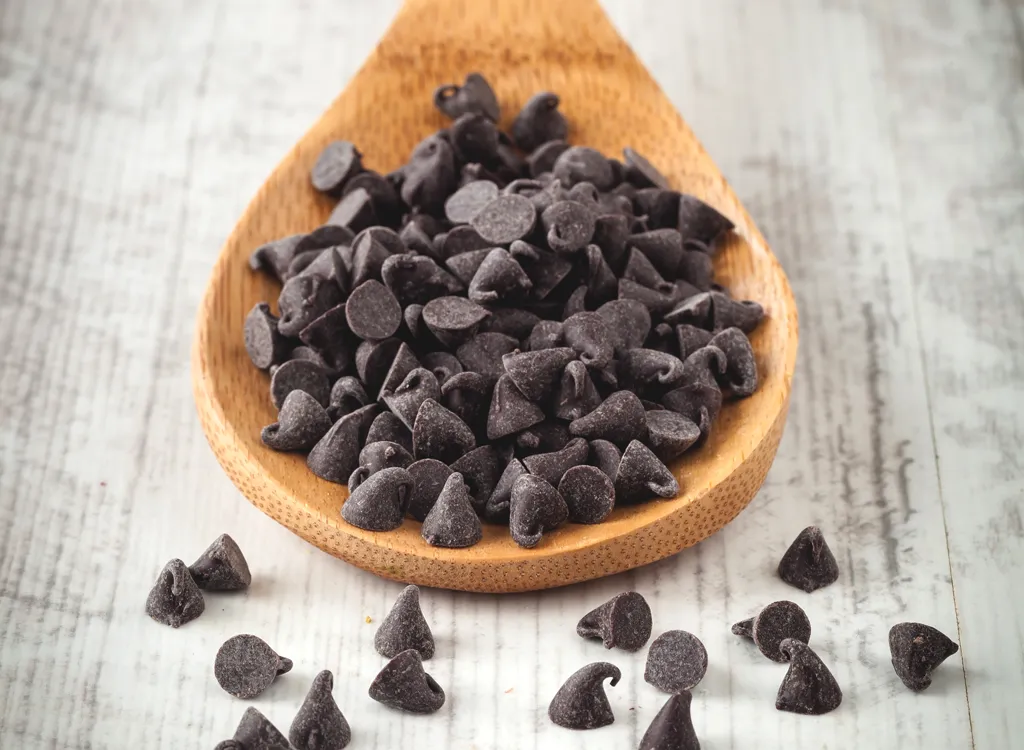
Surely, a few chocolate chips will satisfy your sweet tooth, right? Researchers aren’t so confident. One study published in the journal Appetite showed that people consume an average of 41% more calories when snacking on unwrapped snacks. Researchers say peeling off a wrapper, or cracking the shell of a nut, slows us down, which gives the body more time to send out “I’m full” signals. Plus, the mounting pile of candy wrappers and nut shells serve as a visual reminder of just how much you’ve eaten.
Remember that “just a bite” still has calories, and we usually don’t stop at just one bite. While high-quality dark chocolate (at least 70% cocoa) can be a waist-friendly choice, you may want to stick with small, individually-wrapped portions instead of hand-to-mouth options like chocolate chips.
Sweetened Nuts
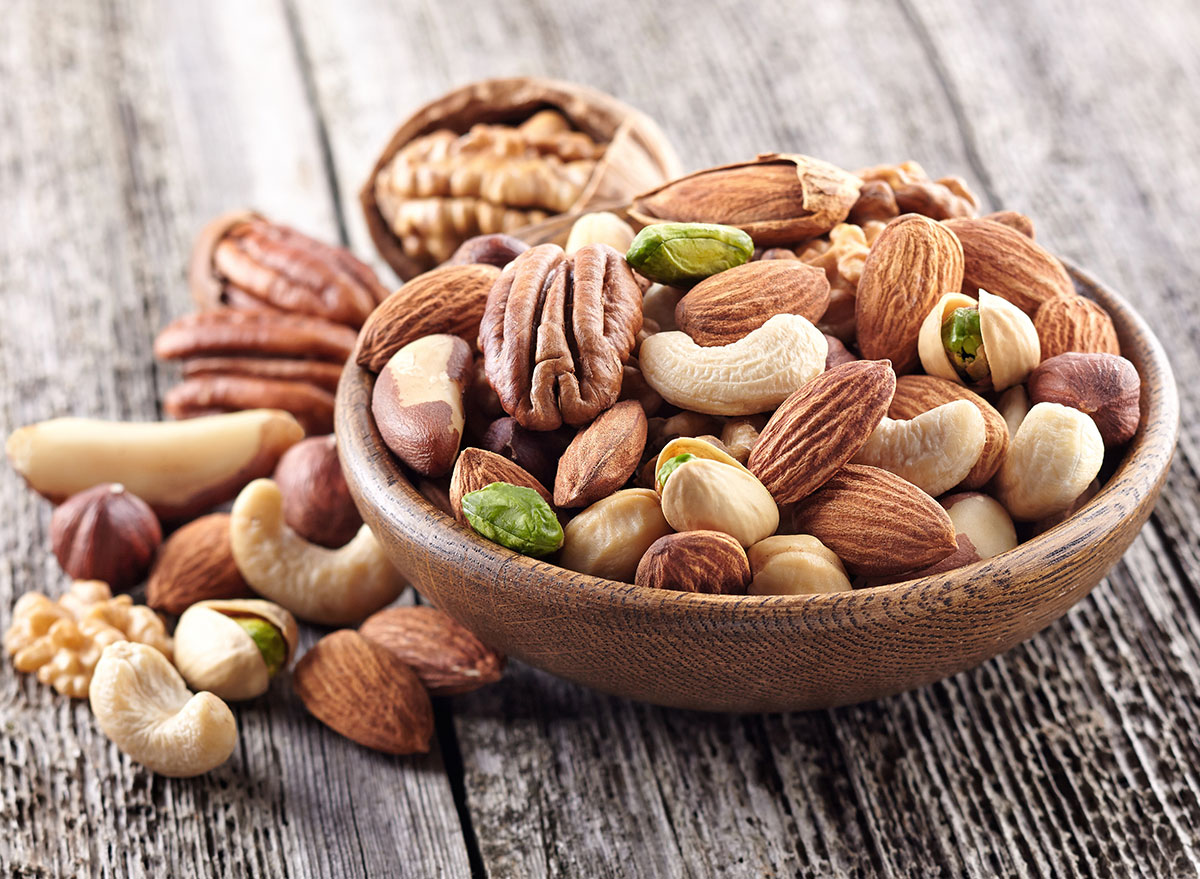
Sure, nuts are delicious and good for you. But, when they’re coated in a layer of sugary syrup, they’re far from a healthy snack. Planters Honey Roasted Peanuts contain 4 grams of added sugars per serving—which is 4 grams more sugar than you’d be eating if you chose an unflavored variety.
If you want some flavor on your nuts, opt for spices like cinnamon or cayenne. As for which type of nut, opt for in-shell varieties. Named “The Pistachio Effect,” research shows the act of shelling nuts can slow you down and give your body a chance to register fullness 86 calories sooner than you would otherwise.
Gluten-free snacks
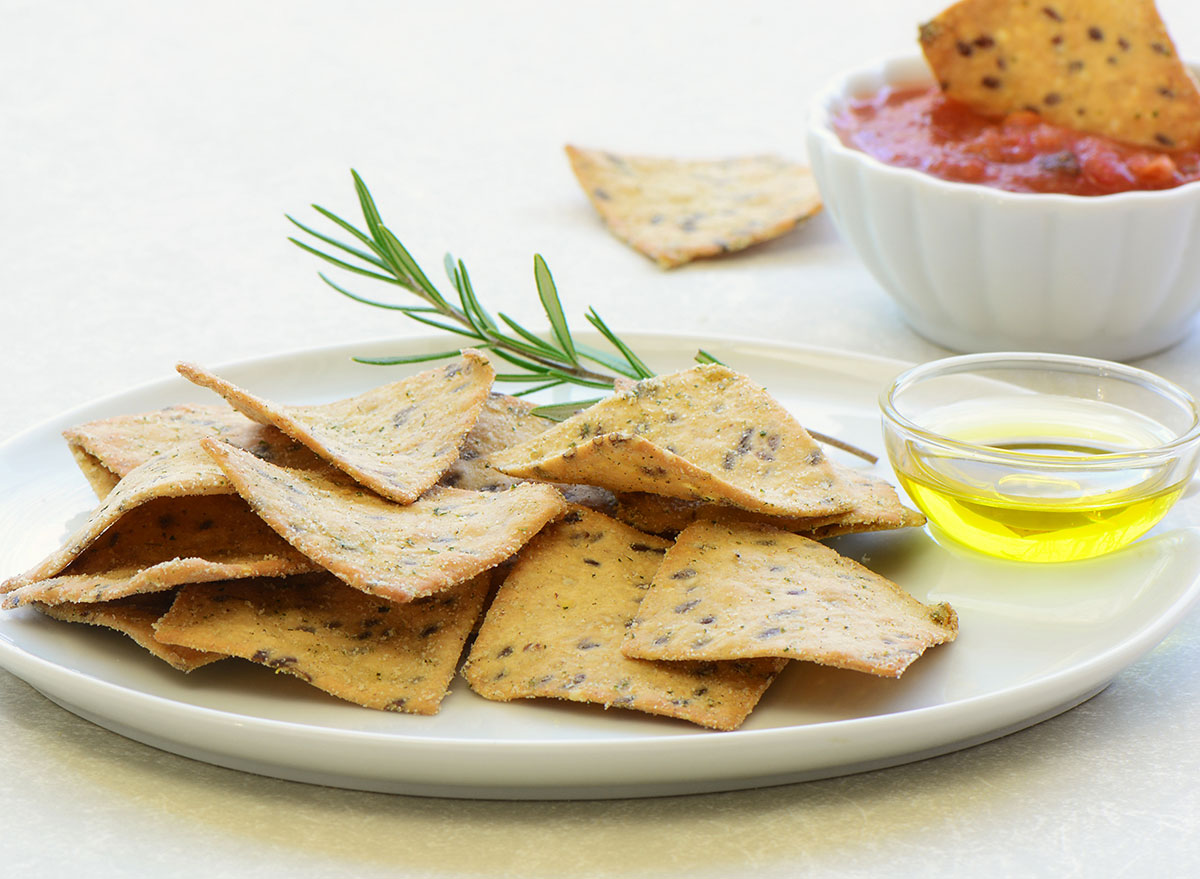
If you’re not gluten-intolerant, there’s no good reason to cut gluten out of your diet completely—even if you’re trying to lose weight. “Many folks have fallen into the trap of thinking gluten-free is synonymous with healthier, but that’s not the case,” says Lisa Richards CNC, nutritionist and founder of The Candida Diet. (ICYDK, gluten-free also isn’t synonymous with carb-free—there are many carbohydrates that do not contain gluten!)
In fact, if you don’t have Celiacs or a gluten intolerance, omitting gluten could actually result in less fiber intake, says Jaramillo. And because fiber is responsible for keeping us full, cutting fibrous gluten products could result in increased snacking and therefore weight gain, she says.
Don’t quit gluten unless there is a medical necessity! Instead, satisfy your hunger with a fibrous, filling snack like oatmeal, whole grain crackers, or roasted chickpeas. Or, opt for naturally gluten-free foods like fruit and veggies.
100-calorie packs
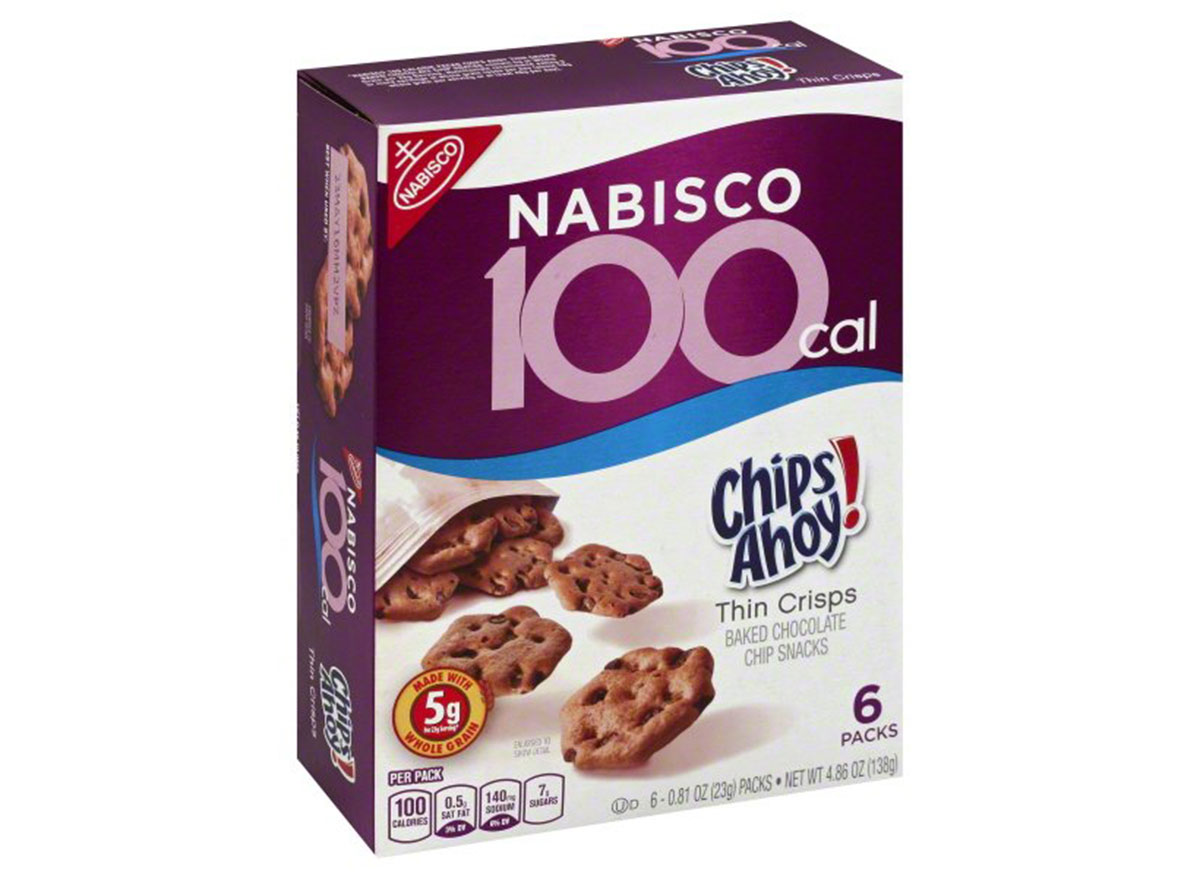
Reaching for a portion-controlled packet of crackers or cookies may sound like a good snack strategy for weight loss, but the mini-packs may fill you out before they fill you up, research suggests. In fact, dieters perceived small snacks in small packages as diet-friendly and ended up eating multiple packets and more calories overall than when given a regular-size package, a recent study in the Journal of Consumer Research found.
When dieting, you’re better off serving yourself a small portion from a regular-sized bag than falling for the allure of a mini pack, study authors suggest.
Fruit smoothies
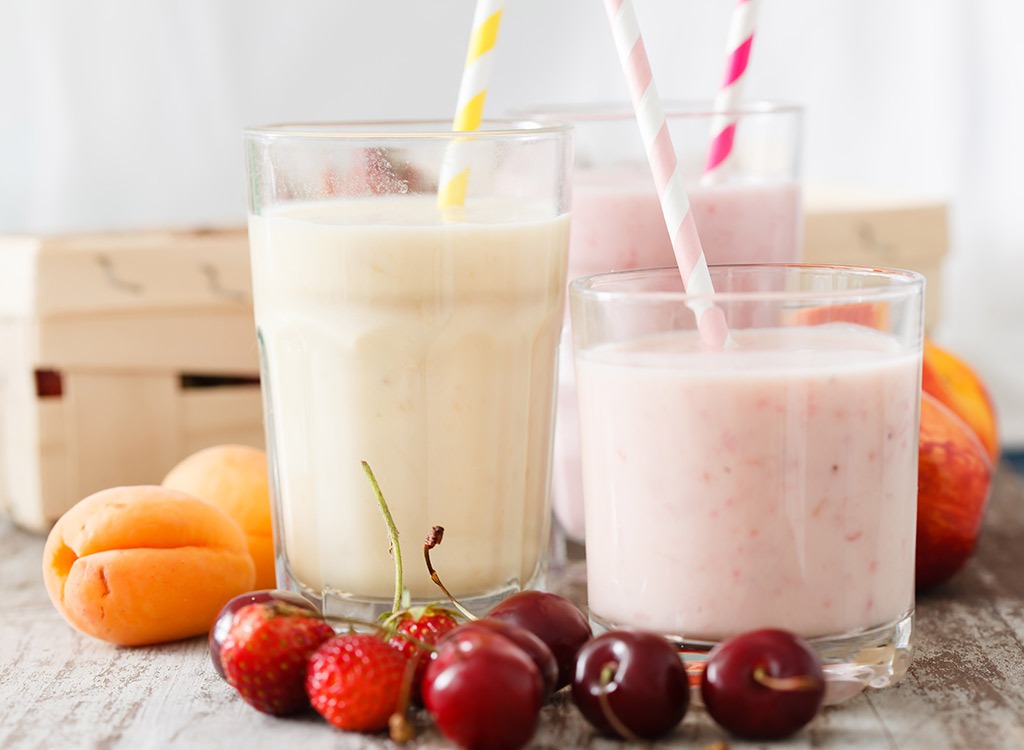
A fruit smoothie sounds like a virtuous choice for an afternoon pick-me-up, but be forewarned: Many store-bought options are blended with high-calorie dairy bases and cheap sweeteners that make them more dessert-like than diet-friendly. A small Baskin Robbins Mango Banana Smoothie packs 420 calories (nearly a third of what the average woman on a 1500-calorie weight loss diet needs in an entire day), and 91 grams of sugar (that’s more than you’ll find in seven scoops of the chain’s Orange Sherbet). Adding insult to injury, banana isn’t featured once on the ingredients list.
If you have a hankering for something sweet and fruity, nothing beats a whole piece (or two!) of real fruit. In fact, a recent study in the journal International Journal of Obesity and Related Metabolic Disorders found liquid carbs to be 17 percent less filling compared with solid ones. As a general rule: Eat, don’t drink, your fruits. And, if it’s something creamy that you’re craving, pair your fruit with a cup of low-fat plain cottage cheese or yogurt. A recent study found high-protein snacks eaten in the afternoon can improve appetite control and diet quality.
Granola
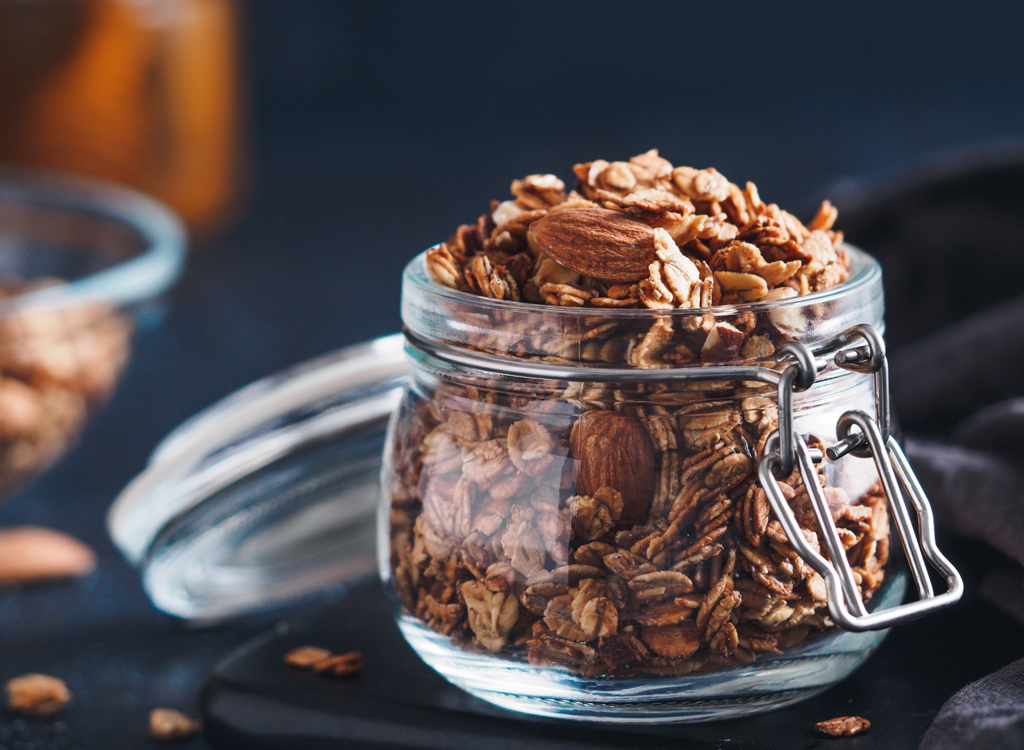
What happens when you take a bowl of oats, drown them in oil, cover them with sugar, and bake them on a cookie tray? You get your average granola: Highly delicious, highly caloric, highly likely to put you over your daily calorie budget in just one serving. Plus, chances are, you’ll munch through far more than the scant half-cup that makes up a single serving. In fact, a recent study found people served themselves the same volume of cereal regardless of caloric value. In other words, you’re likely to pour the same amount of granola into a bowl as you would corn flakes, and consume five times the calories in the process.
A big bowl of oatmeal topped with fresh fruit will fill you up for a fraction of the calories and fat as a small portion of energy-dense granola. In fact, a recent study found oatmeal to be the most satisfying breakfast in the cereal aisle—leading to greater and longer-lasting feelings of fullness than ready-to-eat cereal.
Veggie chips
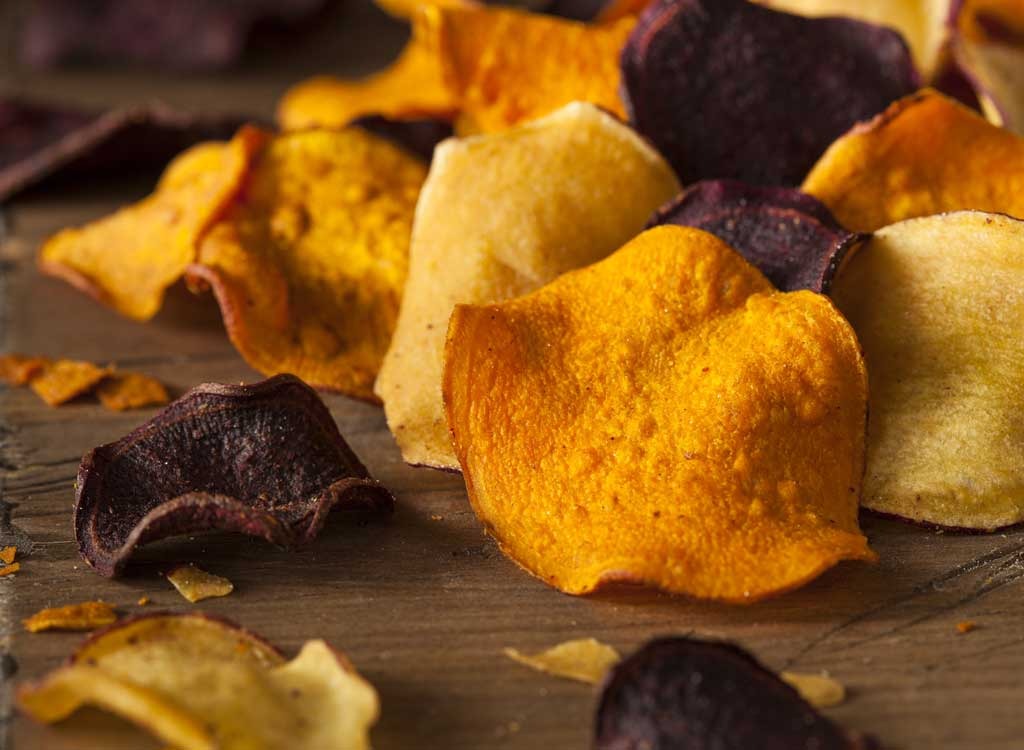
The “healthy” alternative to chips are just another processed food. Their bag might display photos of whole veggies, but these chips are actually pulverized vegetable flour mixed with oil and salt. You can do better.
Keep a bag of edamame in the freezer and defrost individual portions for an ever-ready snack. Munch on baby carrots, or get a fix of crunch and protein from two tablespoons of peanut butter on wheat crackers.
Bran muffins
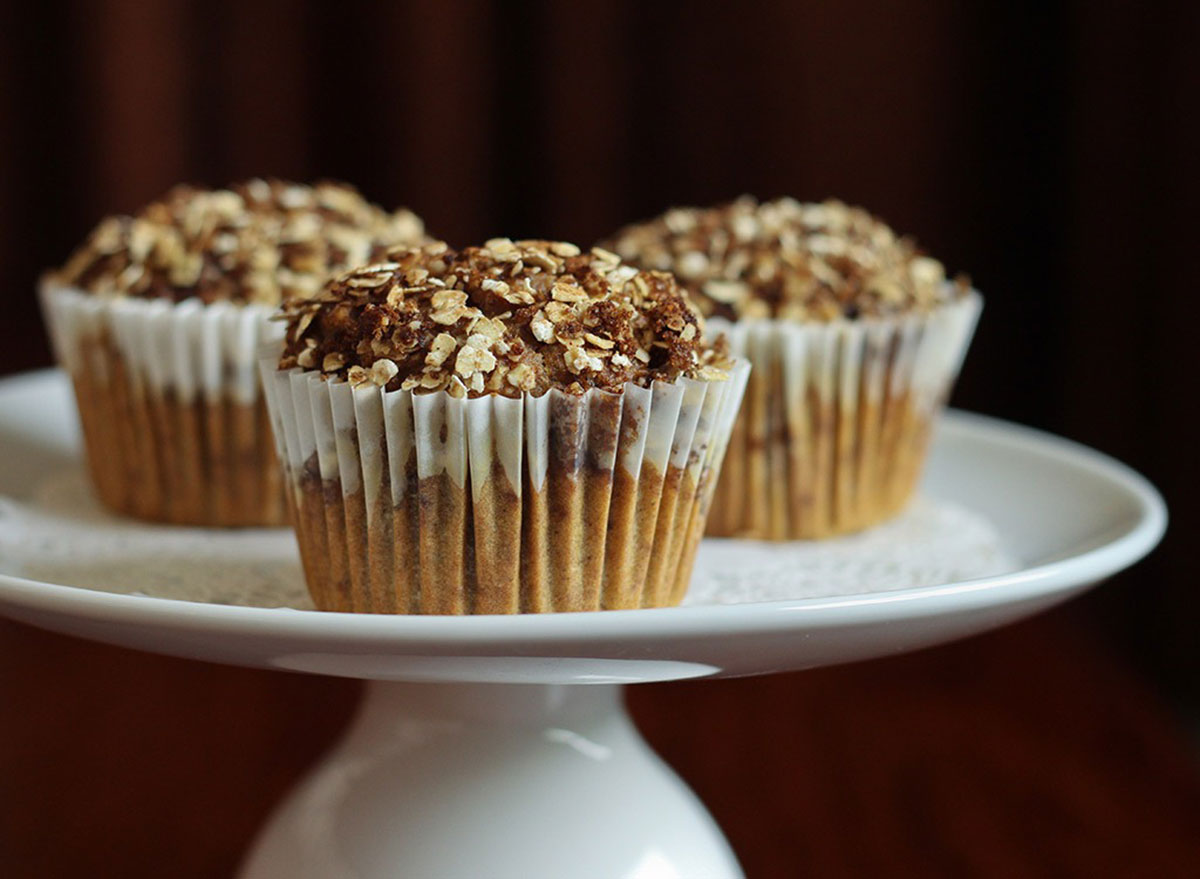
One of the biggest health food imposters, bran muffins are simply excuses to get you to eat cupcakes for breakfast. Each can deliver about 440 calories, with nearly a quarter of them coming from fat. Also, avoid the scones: The rich, flaky taste comes from gobs of butter, flour, and sugar, adding up to 500 calories a pop.
An egg and cheese sandwich usually comes in under 400 calories no matter where you go, as long as it’s not on a bagel. Plus, the protein hit helps temper your appetite as the day wears on.
Trail mix
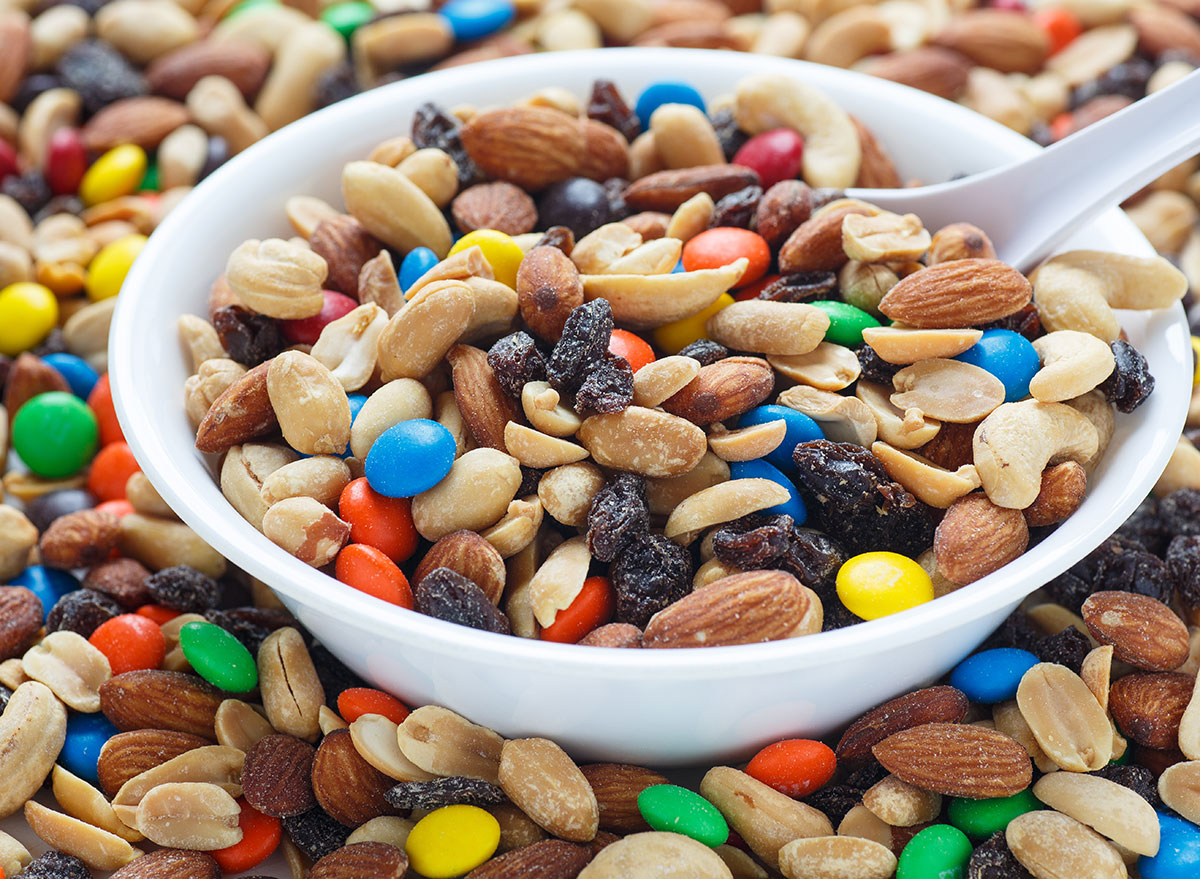
Filled with satiating nuts and bits of fiber-filled fruit, trail mix has to be far healthier than chips and pretzels, right? Not so much. Most trail mixes are loaded with salt, and the dried fruit pieces are essentially sugar dusted with sugar. In fact, Target’s bag of Market Pantry Trail Mix has 15 grams of sugar!
Go for a handful of walnuts or almonds, or use our exclusive guide on how to make the perfect trail mix!
Protein bars
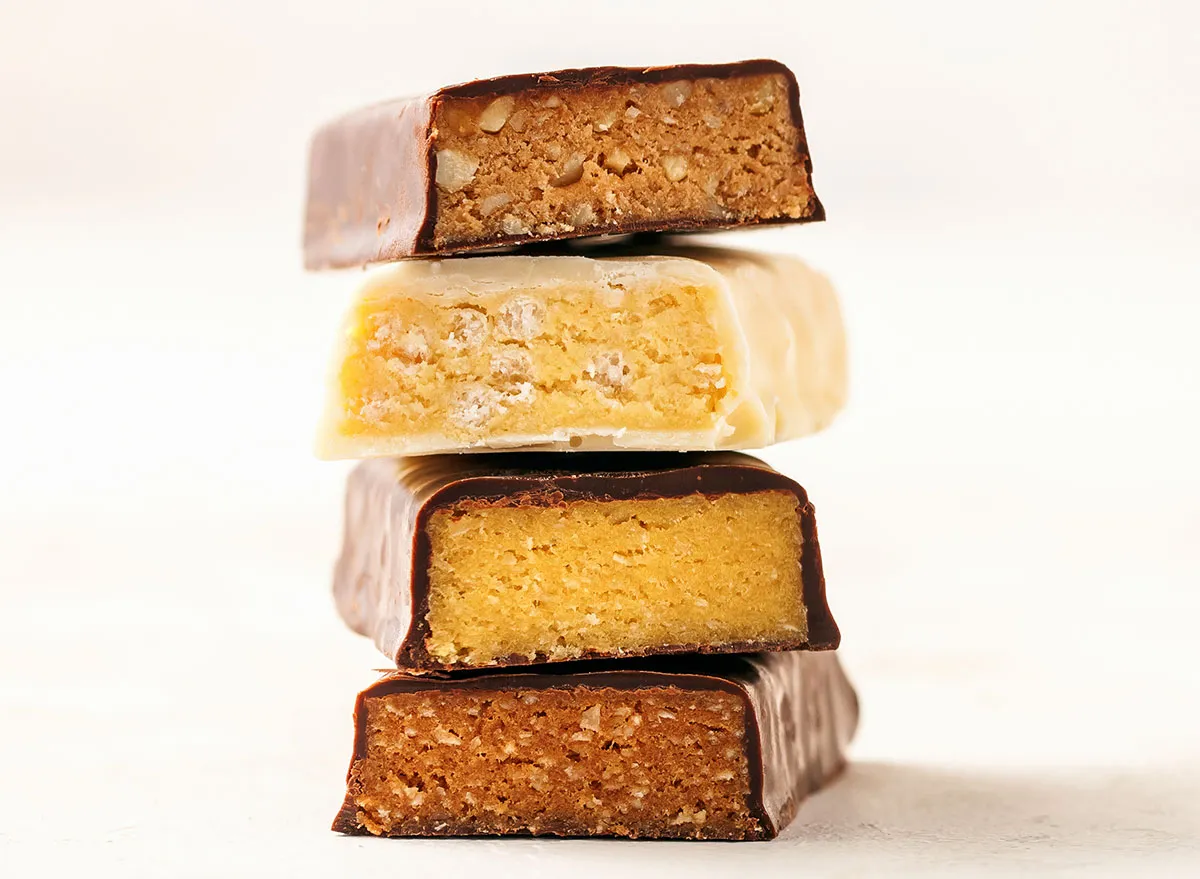
Would you refuel with a Snickers after a workout? That’s exactly what you’re doing when you reach for many protein bars—with their laundry list of ingredients, sugars, and preservatives, and up to 350 calories per serving, you’d be better off eating candy.
Make yourself one of these best protein shake recipes for weight loss!
Flavored yogurt
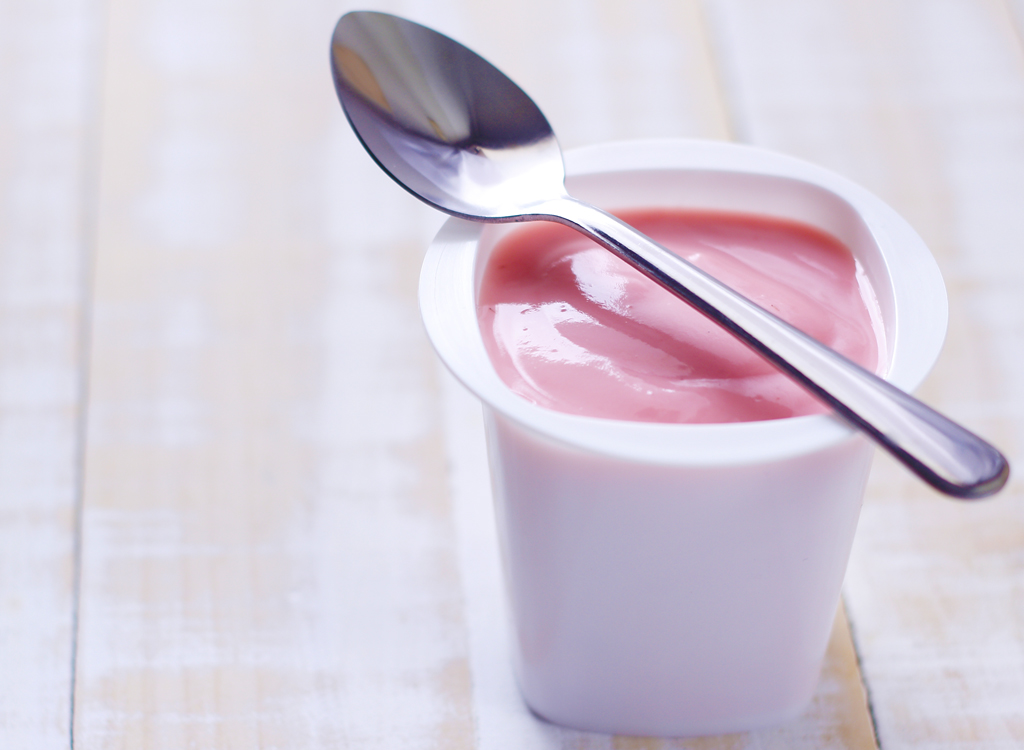
Packed with satiating, muscle-building protein and belly-beneficial probiotics, yogurt is an excellent weight-loss food. But don’t be fooled by its telenovela-style evil twin: Flavored yogurt, a scourge of sugary fruit. For example, Noosa has 19 grams of sugar in its 4.5-ounce tub.
Opt for plain, 2%, or full-fat yogurt (fat-free or low-fat versions are skimmed of nutrients), and add some fresh berries. Pick one of these best yogurts for weight loss!
Craisins
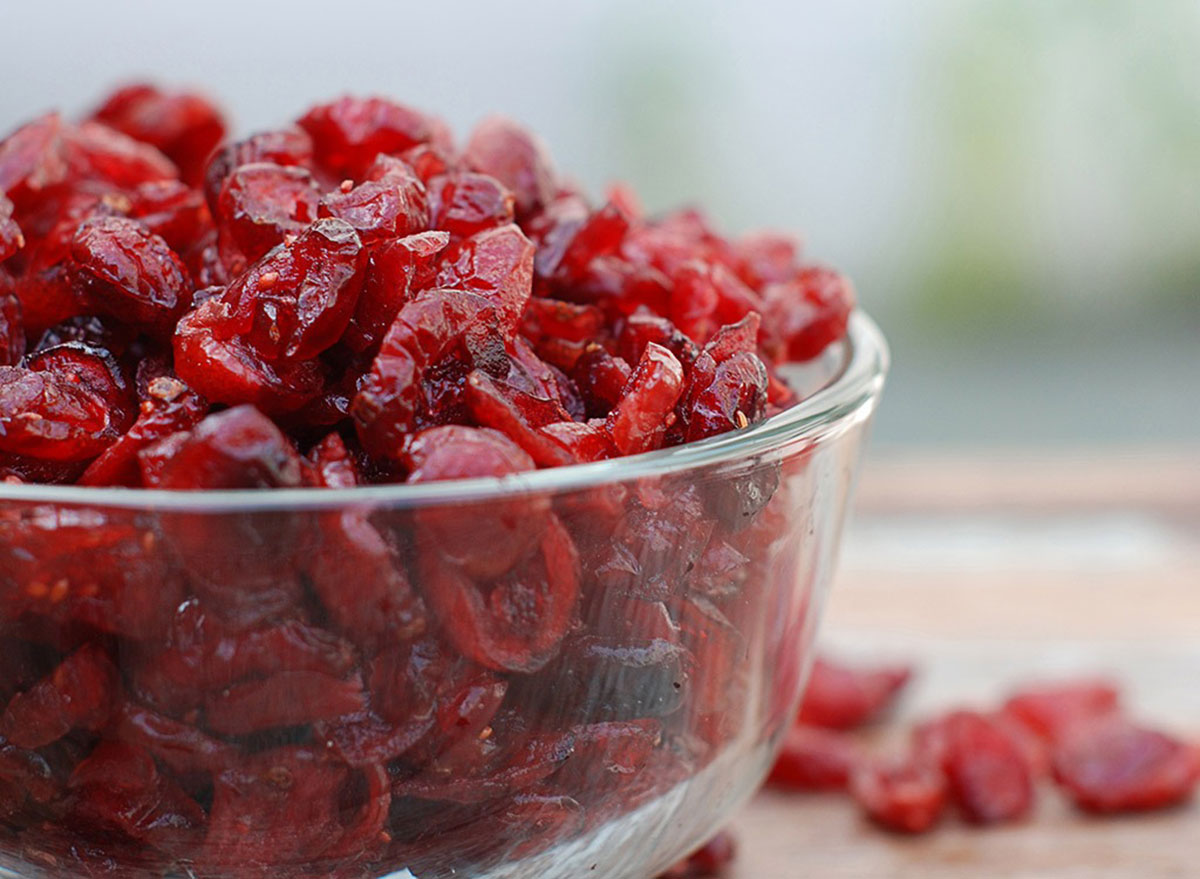
In moderation, dried fruit can be a healthy, fiber-filled snack or salad topping. But, in many cases, it might as well be candy. Not only is the sugar more concentrated in dried fruits than fresh, manufacturers often coat dried fruit in more sugar.
Fresh fruit really isn’t that inconvenient to carry around. Just go for the real thing or avoid the dried version altogether.
Wraps
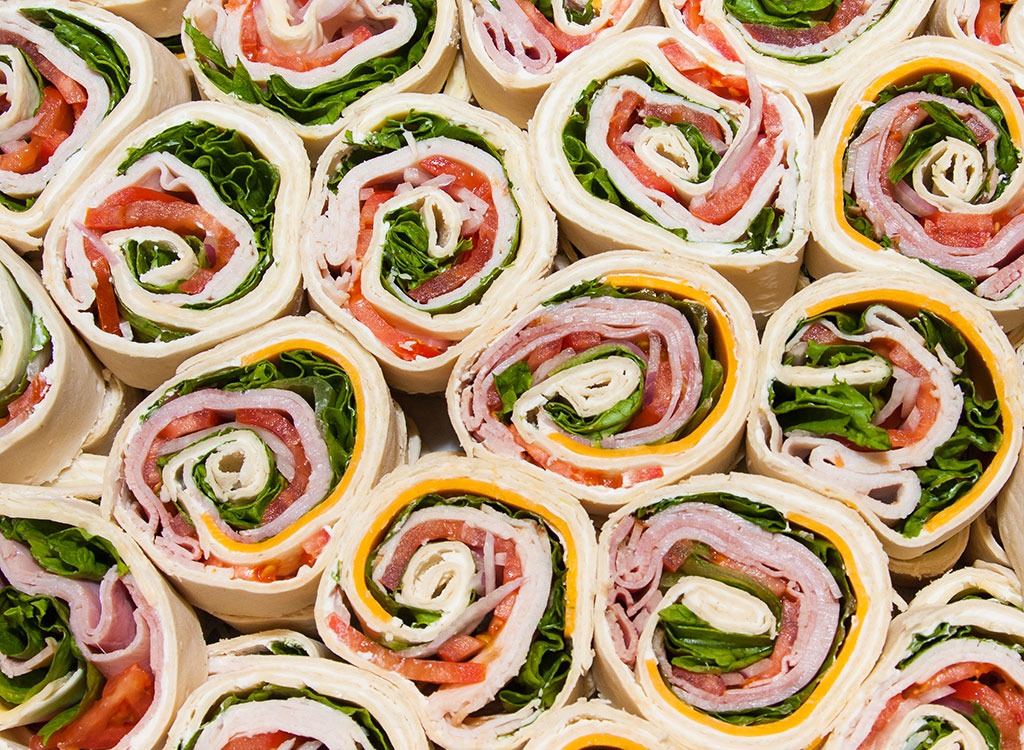
These wafer-thin waist-wideners deserve a bad rap. While most slices of bread top out around 100 calories, many wraps have two or three times that amount. Plus, in order for the tortilla to stay flexible, manufacturers add fat, often in the form of soybean oil and hydrogenated oils.
Make yourself a sandwich with one of these best breads for weight loss. Just stay away from the processed deli meats—they’re full of salt and preservatives.
Reduced-fat peanut butter
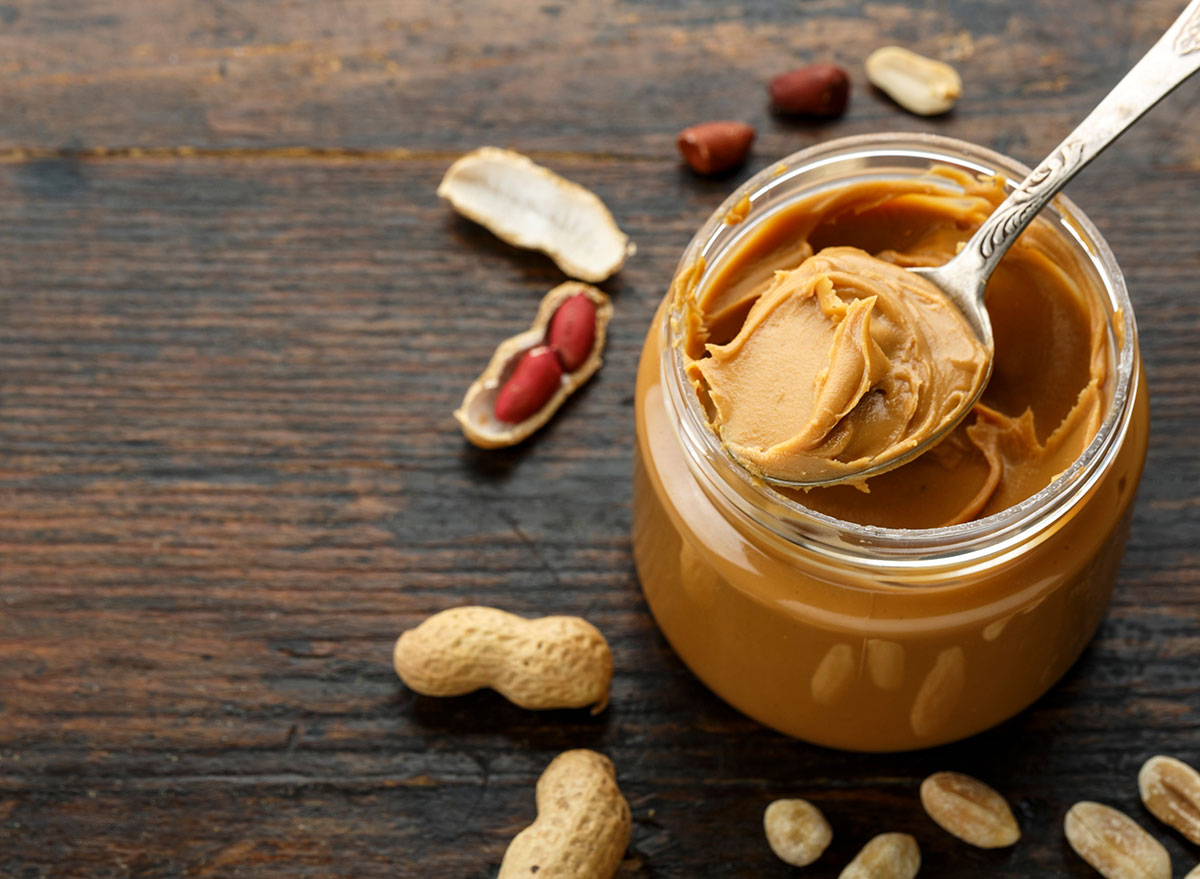
There are a few “nevers” in life: Never wear two kinds of plaid at the same time, never say “I love you” on the first date, and never eat reduced-fat peanut butter. When peanut butter makers remove the naturally occurring, healthy fats from peanuts, they replace them with sugar, corn syrup, and hydrogenated vegetable oil, which increases heart disease risk by a whopping 23 percent. As if that weren’t enough, reduced-fat usually has the same number of calories as regular peanut butter.
Stick with regular, heart-healthy peanut butter and almond butter. Our favorite peanut butter is Smucker’s Natural, made from peanuts only, with a touch of salt.
Chocolate hazelnut spreads
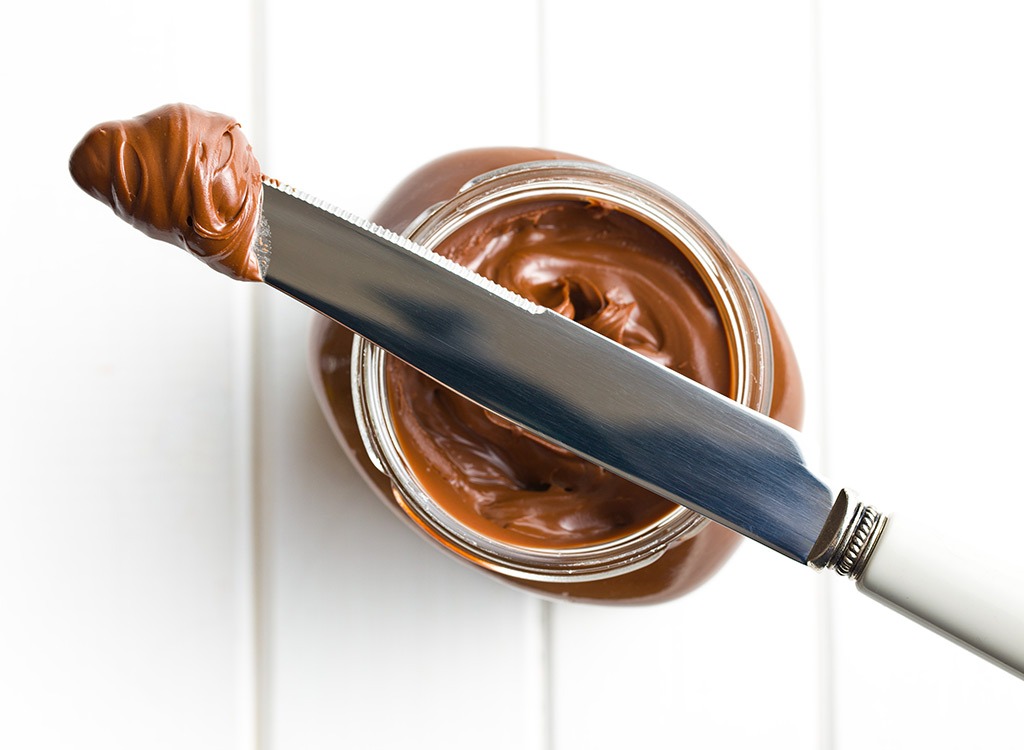
How did peanut butter get such a bad reputation? The low-fat craze of the ’90s is to blame, and it caused so much delusion, that somehow the chocolate hazelnut spread was considered a superior option. In reality, it contains as much sugar as chocolate, plus vegetable oil, an emulsifier, and “reduced fat cocoa powder.”
Pick one of these best nut butters for weight loss instead!
Sugar-free snacks
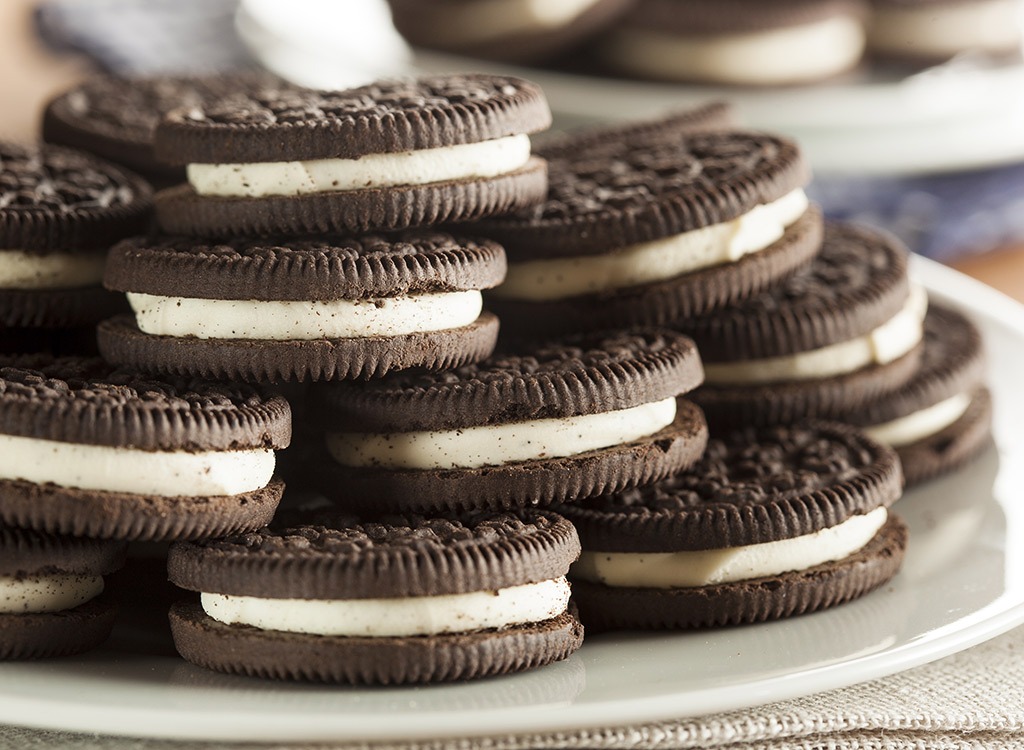
Not only have artificial sweeteners actually been linked to weight gain (they trick the body into wanting additional carbs), but foods labeled as sugar-free can actually contain sugar! Technically, they can include up to 0.5 grams of sugar per serving.
If you’re craving something sweet, skip “sugar-free” options and eat what you’re really craving in moderation.
Cereal bars
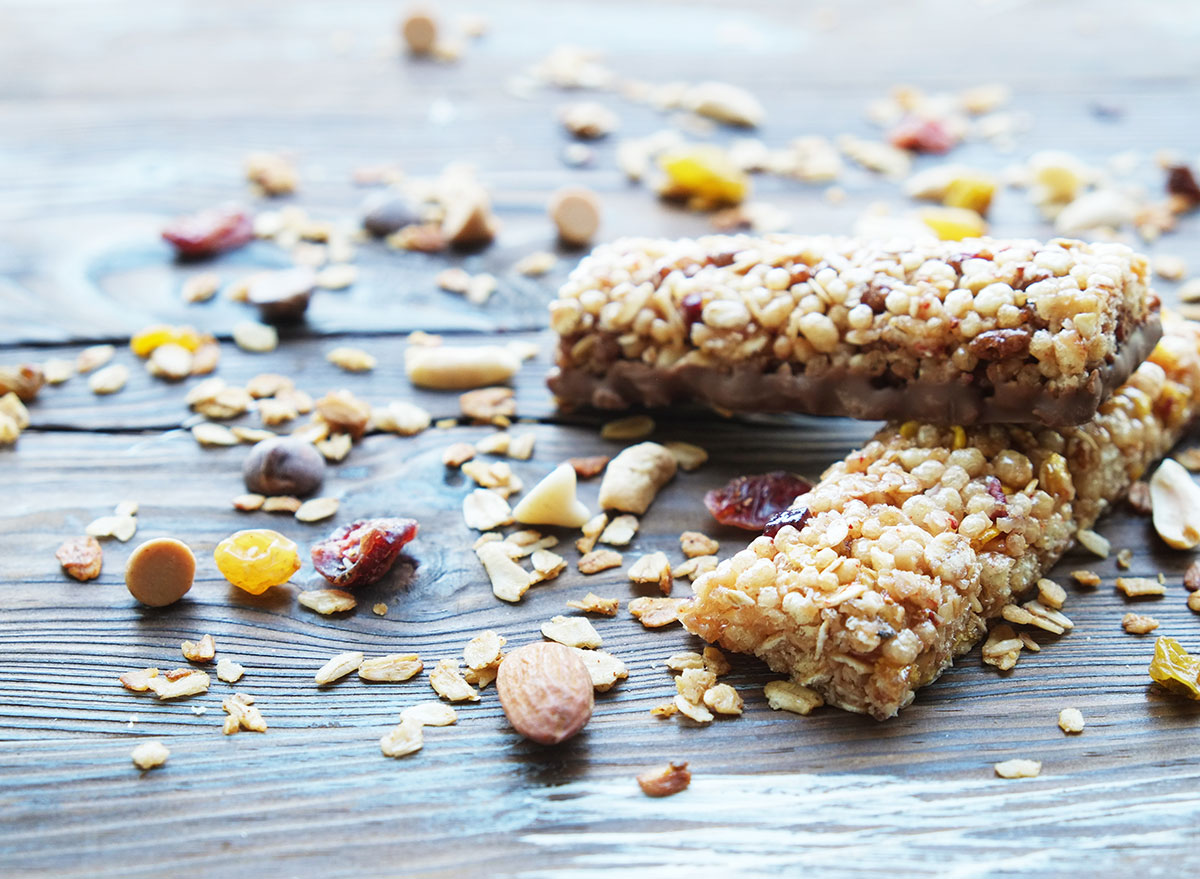
If you love this easy grab-and-go snack, registered dietitian Hayley Cimring, BSc RD with the Fitness Savvy has some bad news for you: “Cereal bars’ image as a health food is based on myth.” That’s right. Loaded with sugar, cereal bars are often no healthier than a chocolate bar, biscuit, or cookie, she says. Nosh on these sugar-dense bad boys in the am and you’ll be hit with a blood sugar crash way before lunchtime.
If you’re going to buy a cereal bar, check the label first. Start with the sugar—if there’s less than ten grams of sugar (obviously, lower is better), you’re good to go. Then, peek at the fiber and protein count. “Fiber keeps you full and protein keeps the munchies at bay,” says Cimring. “At least 3 grams of fiber and 8 grams of protein should be your goal.”
Olive oil
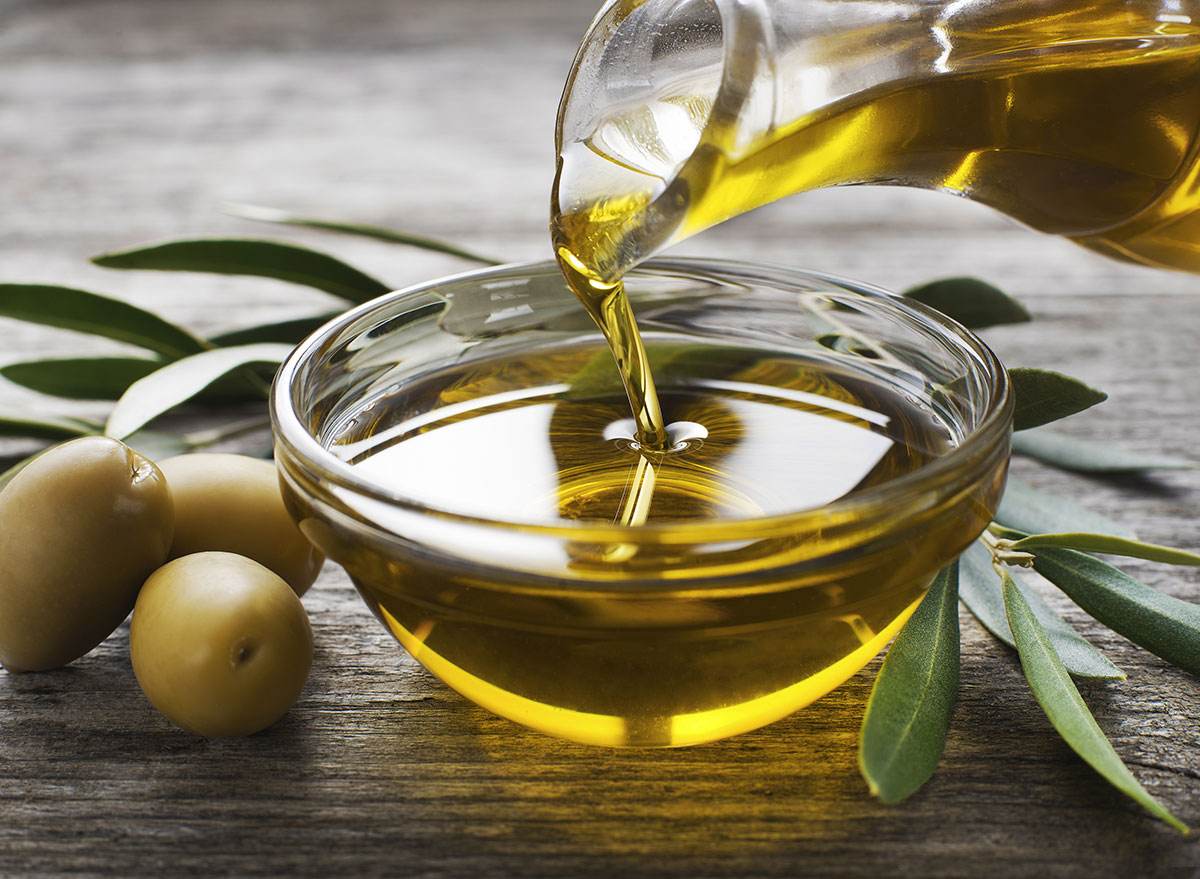
True, olive oil contains monounsaturated (AKA healthy) fatty acids, which are beneficial for heart health and reduced inflammation. But registered dietitian Shena Jaramillo MS, RD says, “Olive oil is a case of ‘enough is as good as a feast’ and it’s easy to accidentally ‘feast’ on olive oil.” Translation: with 120 calories and 14 grams of fat per one-tablespoon serving, one serving is more than enough. And it’s very easy to mis-judge just how much you’re getting when you’re drizzling it onto your salad, pasta, or pan.
“When you add too much olive oil to our day, you really pack on extra calories, which could potentially lead to weight gain long term—or at the very least interfere with weight loss,” she says. Ugh.
Rather than ruling out olive oil altogether, pull out some measuring spoons when you’re cooking with it. Easy peasy.
Anything with Splenda
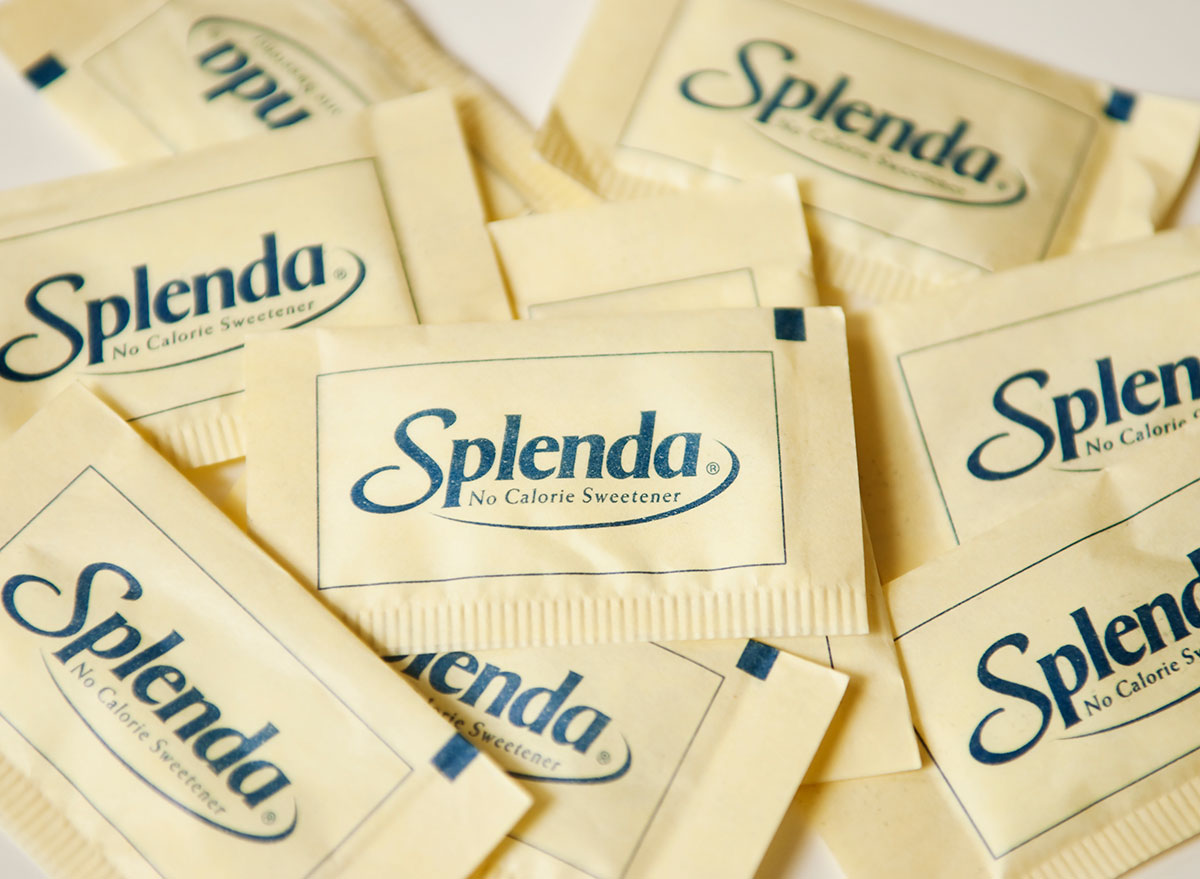
Splenda might as well rebrand as “the sugar substitute from hell.” Also known as sucralose, with zero calories Splenda has widespread appeal for folks trying to cut calories. But, according to Richards,”while it does not contain any calories, it contains plenty of other things that are worrisome for health-conscious individuals.”
Most scary is Splenda’s potential effect on digestion and gut health. One 2017 study published in the journal of Frontiers in Physiology found that six months of daily consumption of Splenda at what’s considered acceptable daily intake damages the intestinal lining of the gut. “This damage can lead to increased intestinal permeability (AKA ‘leaky gut’), which is associated with heightened food intolerance and sensitivity.” Yikes.
Further, regular consumption of artificial sweeteners (including Splenda) may actually be linked to weight gain, not weight loss, according to one 2017 review published in the Canadian Medical Association Journal.
Substitute Splenda for Stevia! “Stevia does not have unpleasant long-term side effects, has a low glycemic index, and zero calories,” says Richards. Or, if you’re craving a sweet snack, go ahead and eat one serving (!) of the real sugar version.
Egg whites
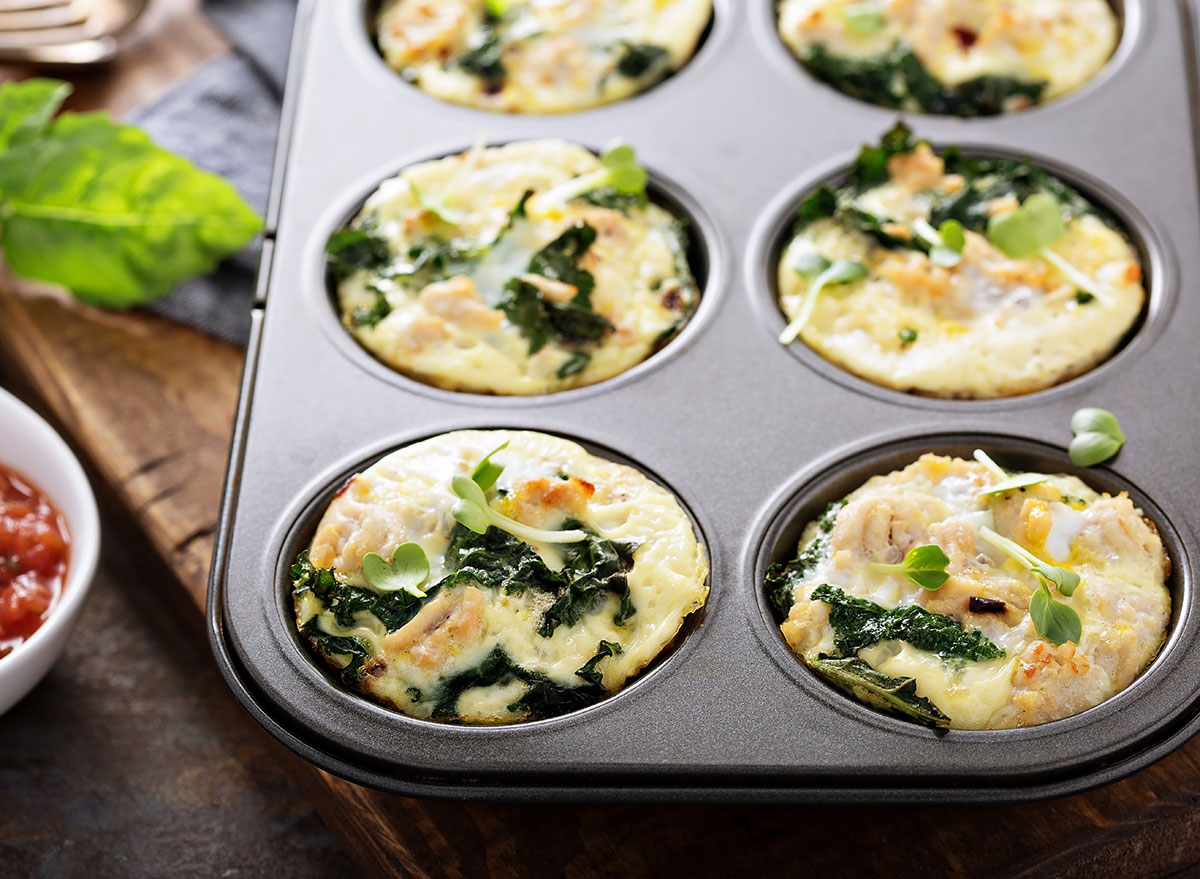
Did you stop eating egg yolks thinking it’s making your breakfast healthier? Good news: “Now that we know that dietary cholesterol has much less of an effect on cholesterol in the body as we once thought, eggs (including the yolk!) have moved back into the good graces of the health community,” says Richards.
What’s more, whole eggs are actually an excellent source of protein and healthy fat, which any weight loss plan should prioritize, she says.
“Eggs become unhealthy not when you eat the yolks, but when you eat four or more at a time or load them with high-fat ingredients,” says Richards. So go ahead and eat the yellow part of the egg—just go easy on the butter, cheese, and sour cream.
Additional Reporting by: Gabrielle Kassel


